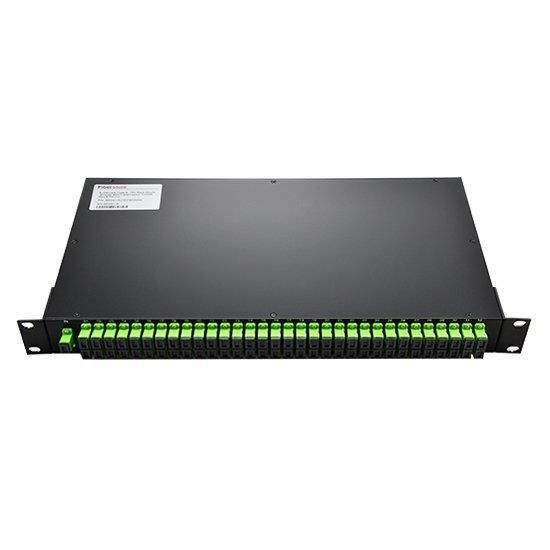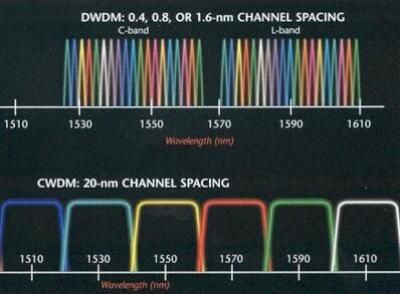Module 4: Fiber Optic Transmission
In the ever-evolving landscape of telecommunications and data transmission, Fiber Optic Transmission have emerged as a groundbreaking technology that has revolutionized the way we transmit information. Module 4 delves into the intricacies of fiber optic transmission, exploring its principles, applications, advantages, and future prospects. Fiber optic transmission has paved the way for faster, more reliable, and efficient communication, making it an indispensable component of the modern world.
Understanding Fiber Optic Transmission
Fiber optic transmission is a method of transmitting data through thin, flexible strands of glass or plastic known as optical fibers. These fibers use light signals to carry information over long distances with minimal signal loss. Unlike traditional copper-based systems that rely on electrical signals, fiber optics use the principles of total internal reflection to guide light pulses through the fiber core.
The core of an optical fiber is surrounded by a cladding layer with a lower refractive index, which helps trap the light within the core through multiple internal reflections. This efficient light propagation is what enables fiber optics to transmit data over extended distances with minimal signal degradation.
Advantages of Fiber Optic Transmission
- High Bandwidth: One of the primary advantages of fiber optic transmission is its exceptional bandwidth. Optical fibers can transmit large volumes of data at extremely high speeds, making them ideal for modern high-data applications such as video streaming, cloud computing, and high-speed internet.
- Low Latency: Fiber optic transmission offers low latency, which is crucial for applications that require real-time data transfer, such as online gaming and video conferencing. This low latency is a result of the speed of light being the transmission medium.
- Immunity to Electromagnetic Interference: Unlike copper cables, which are susceptible to electromagnetic interference, fiber optic cables are immune to such disruptions. This makes them ideal for use in environments where electromagnetic interference is prevalent, such as industrial settings.
- Security: Fiber optic communication is highly secure because it is difficult to tap or intercept the data being transmitted through the fiber. Unlike copper cables, which can be more easily tapped into, optical fibers do not emit electromagnetic signals that can be easily intercepted.
- Long-Distance Transmission: Optical fibers can transmit data over long distances without significant signal loss. This makes them suitable for long-haul telecommunications networks, including undersea cables that connect continents.
Applications of Fiber Optic Transmission
Fiber optic transmission finds applications in a wide range of fields, some of which include:
- Telecommunications: Fiber optics form the backbone of modern telecommunications networks, enabling the transmission of voice, data, and video over long distances. These networks support everything from traditional phone calls to high-definition video streaming.
- Internet Services: The high-speed capabilities of fiber optics have led to the deployment of fiber-to-the-home (FTTH) and fiber-to-the-premises (FTTP) networks, providing users with ultra-fast internet connections.
- Data Centers: Data centers rely on fiber optic connections to ensure high-speed and low-latency communication between servers and data storage devices. This is crucial for the efficient functioning of cloud computing and web hosting services.
- Cable Television: Fiber optics are increasingly used in cable television networks to transmit high-definition and 4K video signals. This allows for better picture quality and more channels to be delivered to subscribers.
- Medical Imaging: Fiber optic technology is used in medical imaging equipment, such as endoscopes and optical coherence tomography (OCT) systems, enabling doctors to visualize and diagnose medical conditions more accurately.
- Military and Defense: Fiber optics play a crucial role in secure military communication systems, where data security and reliability are paramount.
Challenges and Future Prospects
While fiber optic transmission offers numerous advantages, it is not without its challenges and limitations:
- Installation Costs: The installation of fiber optic networks can be expensive, particularly in areas with existing copper-based infrastructure. However, the long-term benefits often outweigh the initial costs.
- Fragility: Optical fibers are fragile and can be damaged if not handled carefully. This makes them susceptible to breakage during installation and maintenance.
- Limited Coverage: Fiber optic networks are not yet available everywhere, and in some remote or rural areas, the infrastructure required for fiber optic deployment may not be economically viable.
- Upkeep and Maintenance: Regular maintenance is necessary to ensure the optimal performance of fiber optic networks. This includes monitoring for signal degradation, cleaning connectors, and repairing any damaged fibers.
Looking ahead, fiber optic transmission is expected to continue its rapid growth and evolution. Researchers are working on developing new materials and techniques to increase the bandwidth and efficiency of optical fibers. Additionally, the deployment of 5G and beyond, as well as the expansion of the Internet of Things (IoT), will drive the demand for faster and more reliable data transmission, further solidifying the role of fiber optics in our digital world.

Conclusion
Module 4: Fiber Optic Transmission highlights the pivotal role that fiber optics play in modern communication systems. With their high bandwidth, low latency, and immunity to electromagnetic interference, optical fibers have transformed the way we transmit data, enabling faster and more reliable connections for a wide range of applications.
As technology continues to advance, fiber optic transmission will remain at the forefront of innovation, facilitating the development of new and exciting applications that rely on high-speed, secure, and long-distance data transmission. In an increasingly interconnected world, fiber optics will continue to shape the way we communicate, work, and live, making it an indispensable technology for the present and the future.
FAQs
What is fiber optic transmission?
Fiber optic transmission is a method of transmitting data using thin strands of glass or plastic called optical fibers. It utilizes light signals to carry information over long distances with minimal signal loss.
How do fiber optics work?
Fiber optics work on the principle of total internal reflection. Light signals are transmitted through the core of the optical fiber and are continuously reflected within the core due to the lower refractive index of the cladding layer, ensuring efficient transmission.
What are the advantages of fiber optic transmission?
- High Bandwidth: Fiber optics offer exceptional bandwidth for transmitting large volumes of data at high speeds.
- Low Latency: They provide low latency, making them suitable for real-time applications.
- Immunity to Electromagnetic Interference: Fiber optics are immune to electromagnetic interference.
- Security: Fiber optic communication is highly secure due to the difficulty of interception.
- Long-Distance Transmission: They can transmit data over long distances without significant signal loss.
Where is fiber optic transmission used?
Fiber optic transmission is used in various fields, including telecommunications, internet services, data centers, cable television, medical imaging, and military and defense applications.
What are some challenges associated with fiber optics?
- Installation Costs: The initial installation of fiber optic networks can be expensive.
- Fragility: Optical fibers are delicate and can be easily damaged if mishandled.
- Limited Coverage: Fiber optic networks may not be available in all areas, especially remote or rural locations.
- Maintenance: Regular maintenance is required to ensure optimal performance.
How fast is fiber optic transmission?
Fiber optic transmission can reach speeds of up to several terabits per second, making it one of the fastest data transmission methods available.
What are the different types of fiber optic cables?
There are two primary types of fiber optic cables: single-mode and multi-mode. Single-mode fibers are used for long-distance transmission, while multi-mode fibers are suitable for shorter distances.
How is fiber optic transmission different from copper-based transmission?
Fiber optic transmission uses light signals and offers higher bandwidth, immunity to electromagnetic interference, and longer transmission distances compared to copper-based transmission, which relies on electrical signals.
Can fiber optic cables be used for home internet connections?
Yes, fiber optic cables are commonly used for high-speed home internet connections. These connections are often referred to as Fiber to the Home (FTTH) or Fiber to the Premises (FTTP).
What is the future of fiber optic transmission?
Fiber optic transmission is expected to continue evolving, with ongoing research aimed at increasing bandwidth and efficiency. It will play a crucial role in supporting technologies like 5G, the Internet of Things (IoT), and high-definition content delivery.
Also read:Fiber Optic Transmission







